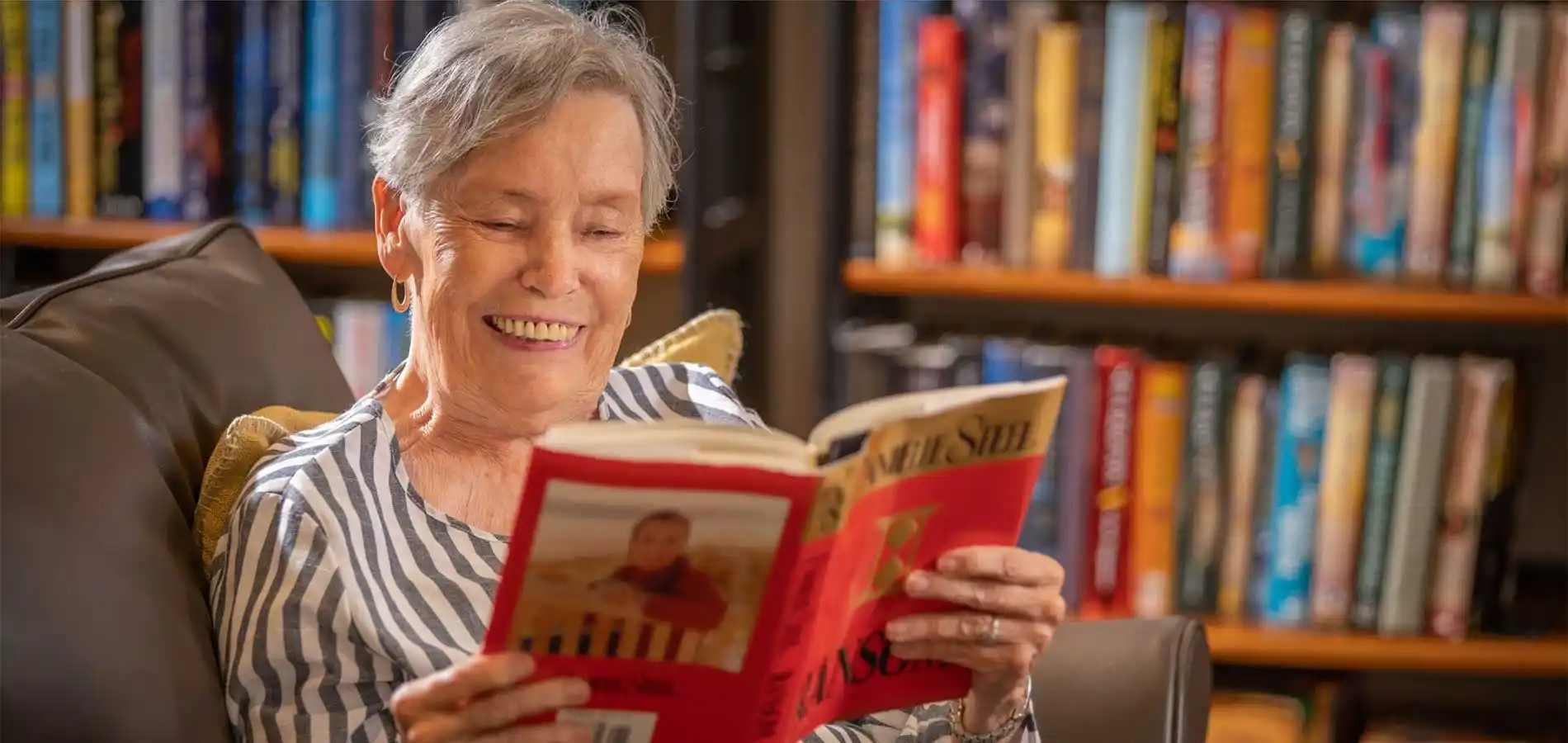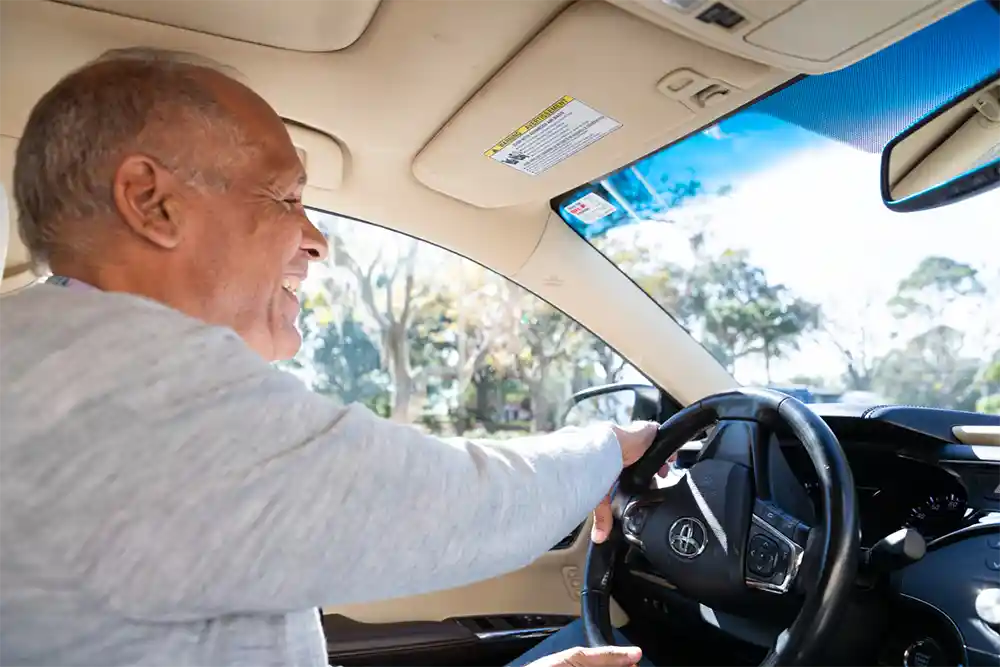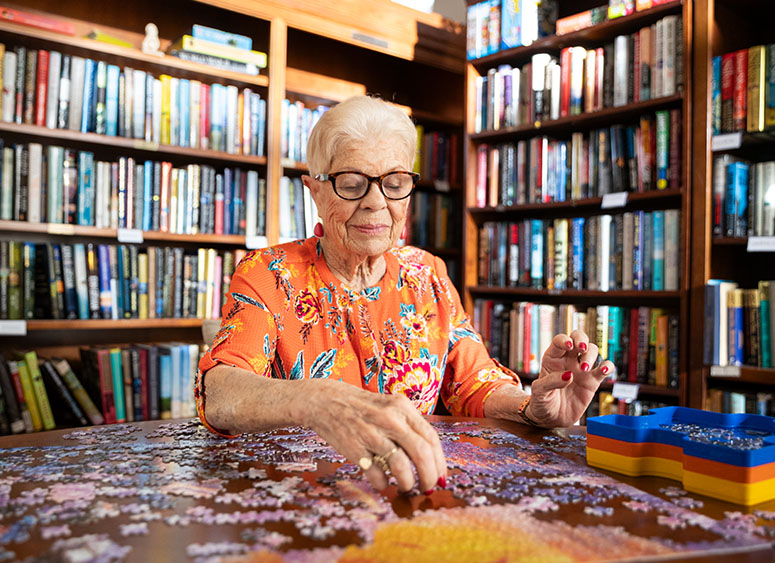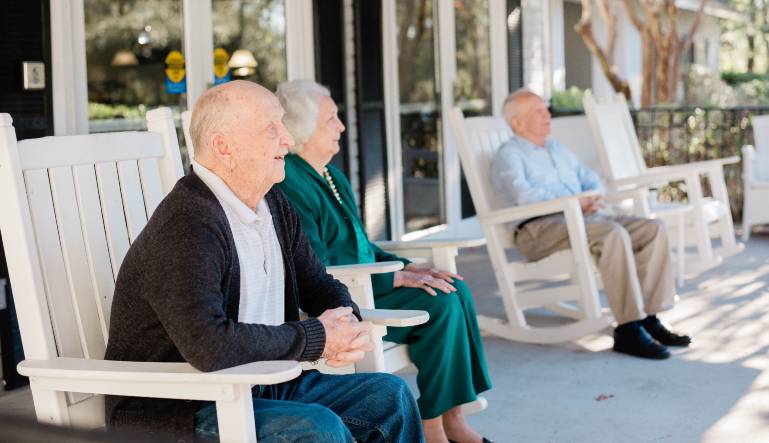If you’re an introvert considering senior living but are concerned about socializing, don’t be! The truth is that these communities are designed to accommodate your needs too. Senior living, and independent living communities in particular, ensure you can enjoy peace and quiet when you need it.
By moving to a senior living community, you can enjoy the comfort of your own space while still taking advantage of social opportunities on your own terms.
How Senior Living Communities Support Introverts’ Needs
Privacy & Independence are Prioritized
If the thought of moving into a senior living community brings to mind college days of shared rooms and bathrooms, let us reassure you—modern senior living is nothing like that. Independent living communities prioritize privacy and independence, providing residents with their own private apartment homes.
These living spaces often include thoughtful amenities such as kitchens or kitchenettes, giving you the freedom to cook your favorite meals whenever you like or join community dining when you’re in the mood to mingle. For instance, you might enjoy a quiet breakfast alone with your favorite news program in the morning and later choose to join others in the dining area if you feel like company.
This gives you complete control over your daily routine, letting you decide when and how much you want to socialize—without any pressure. Additionally, many communities accommodate independent living residents who want to keep their cars, so you can come and go as you please.
Peace and Quiet Aplenty
Pockets of peace can be found outside of your private residence too. Senior living communities often feature quiet lounges and libraries where residents can relax with a good book, crossword puzzle, or a podcast. Onsite movie theaters and screening rooms also provide an escape without taxing the social battery.
Outdoor spaces such as gardens, walking paths, and patios are perfect for connecting with nature, meditating, or simply enjoying the surroundings, on your own or in the company of others.
Flexible Socialization
Perhaps the best part of choosing senior living as an introvert is the ability to enjoy solitude without feeling isolated. Senior living offers plenty of pre-planned events—trips, clubs, classes, and happy hours—but participation is always optional. You have the freedom to join in when you feel like it and opt out when you need a break.
Senior living also makes it easier to interact naturally, whether it’s a brief conversation with neighbors in the hallway, sharing news over coffee in the cafe, or chatting about the upcoming holidays at the salon—without any pressure to engage beyond what feels comfortable. This balance helps you feel in control of your social life.
Discover Five Star Senior Living
Senior living is an excellent choice for both extroverts and introverts, and Five Star Senior Living truly excels in meeting the needs of all residents. With a wide range of accommodations, thoughtful amenities, and personalized services, Five Star Senior Living offers an experience that caters to every personality.
From peaceful, private spaces to lively meeting places, Five Star Senior Living creates an environment where residents can thrive. Our lifestyle enrichment program is designed to enhance emotional, physical, intellectual, and community wellness, ensuring that each resident finds the balance that works best for them.
Whether you value solitude or enjoy socializing, Five Star Senior Living provides the ideal setting for you to live comfortably and independently. Ready to explore options that respect your need for individuality? Contact us to schedule a tour at a Five Star Senior Living community near you.
Contact Us Today
"*" indicates required fields










